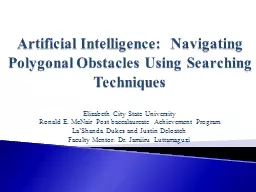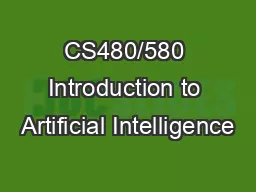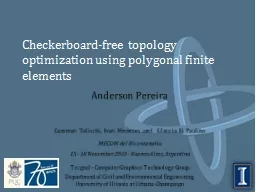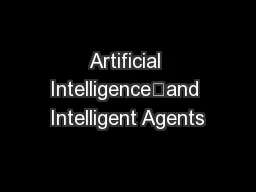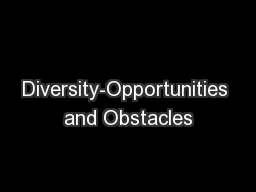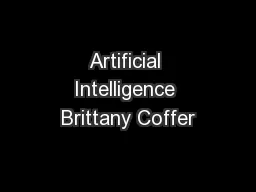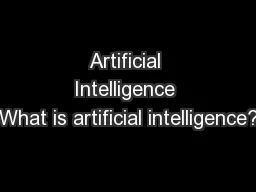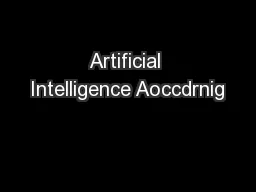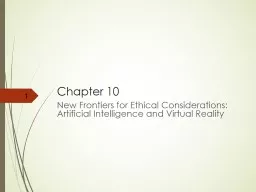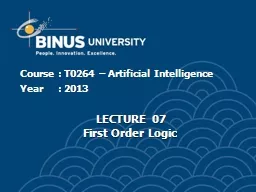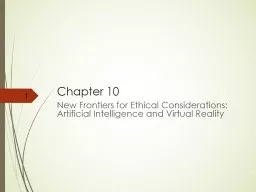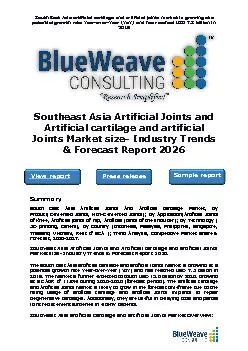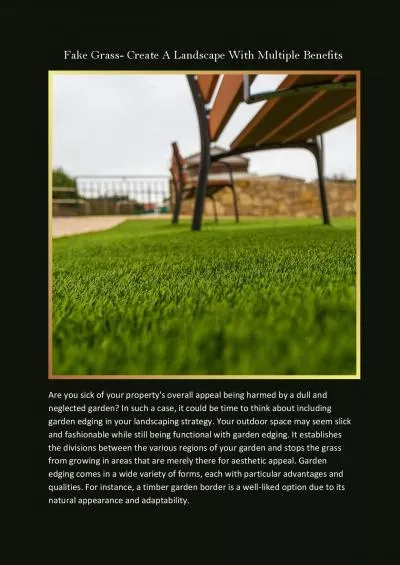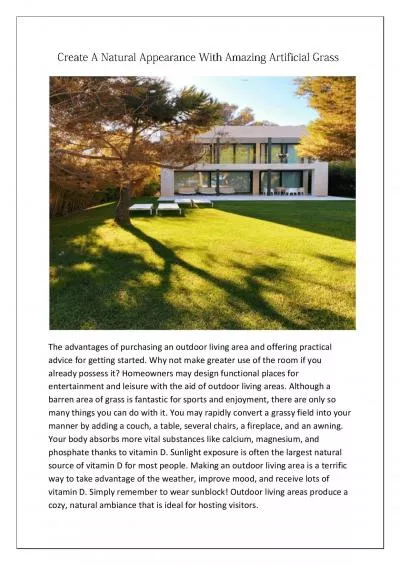PPT-Artificial Intelligence: Navigating Polygonal Obstacles Us
Author : tatyana-admore | Published Date : 2016-06-08
Elizabeth City State University Ronald E McNair Post baccalaureate Achievement Program LaShanda Dukes and Justin Deloatch Faculty Mentor Dr Jamiiru Luttamaguzi The
Presentation Embed Code
Download Presentation
Download Presentation The PPT/PDF document "Artificial Intelligence: Navigating Pol..." is the property of its rightful owner. Permission is granted to download and print the materials on this website for personal, non-commercial use only, and to display it on your personal computer provided you do not modify the materials and that you retain all copyright notices contained in the materials. By downloading content from our website, you accept the terms of this agreement.
Artificial Intelligence: Navigating Polygonal Obstacles Us: Transcript
Download Rules Of Document
"Artificial Intelligence: Navigating Polygonal Obstacles Us"The content belongs to its owner. You may download and print it for personal use, without modification, and keep all copyright notices. By downloading, you agree to these terms.
Related Documents

